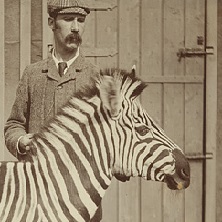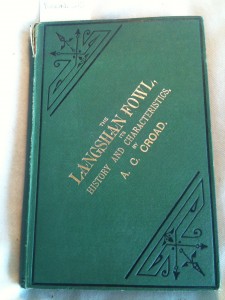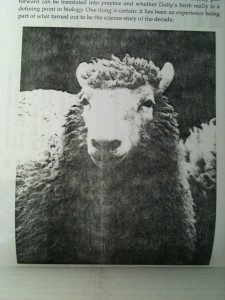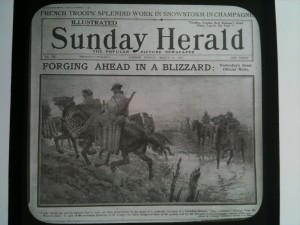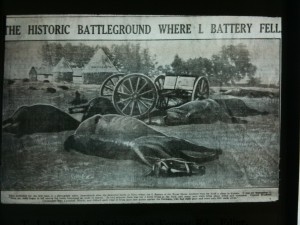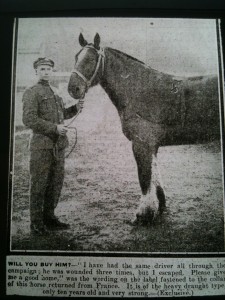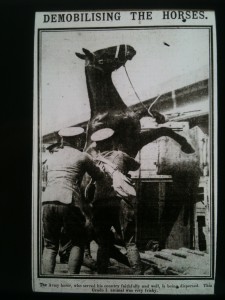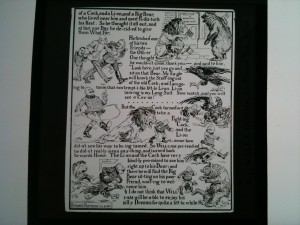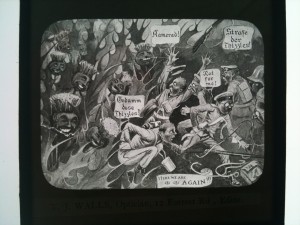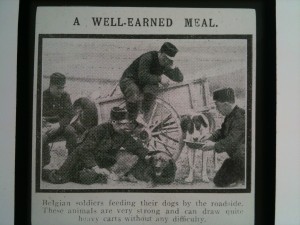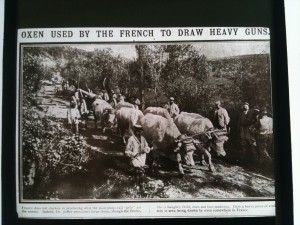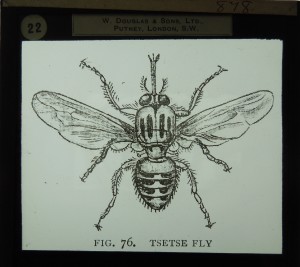
Glass slide, which probably once belonged to James Cossar Ewart, showing the tsetse fly (Coll-1434/3139)
It was announced last week that scientists have deciphered the genetic code of the tsetse fly, which offers hope of eradicating one of Africa’s most deadly diseases. The fly, which is only found in Africa, carries parasitic micro-organisms which cause sleeping sickness (trypanosomiasis) in humans by attacking their circadian rhythms (biological clock) and can be fatal if left untreated. As well as the threat to people, the tsetse can have equally devastating effects on animals, particularly livestock, causing infertility, weight loss and decrease in milk production. By also rendering animals too weak to plough, the consequences for farmers can be catastrophic. Since the parasite can evade mammals’ immune systems, vaccines are useless, and control of the tsetse is currently only achievable through radiation, pesticides or trapping.
Concerns about the tsetse fly in Africa date from far before such advances in genetics could hope to help. There are several letters in James Cossar Ewart’s archives which give an insight into how the problem was being dealt with over a century ago. As you may remember from other posts, Ewart, Professor of Natural History at the University of Edinburgh from 1882 to 1927, famously conducted cross-breeding experiments with zebras and horses on his home farm in Penicuik. It is perhaps not too surprising then, that zebras featured in Ewart’s thoughts about the tsetse fly…
Ewart’s letters show that between 1903 and 1909 he was corresponding with various individuals involved in the administration of East Africa (which was then a protectorate of the British Empire), where the tsetse fly was a great problem, particularly where animals such as horses – which were invaluable for transport – were being infected. Ewart believed his zebras could be the solution, if it could be shown that they were immune to the disease the fly carried. (Ewart had already been researching the potential of zebras and zebra hybrids as alternative pack and transportation animals in military, mining and agricultural contexts around the world). However, in June 1903, a letter from Ewart’s regular correspondent, the German animal dealer and trainer Carl Hagenbeck, regretfully informed Ewart that three zebras had died in Berlin after being infected. However, hope was not lost; a month later, Alice Balfour (sister of the 1st Earl of Balfour) wrote to Ewart wondering whether cross-breeding infected zebras with healthy horses might lead to an immune hybrid strain being created. As a matter of fact, zebras are indeed immune to the bite of the tsetse, with some theories holding that zebras have evolved stripes to confuse the flies and deter attack. In 1909, the author, soldier and hunter Lieutenant-Colonel John Henry Patterson wrote to Ewart stating that it was a shame zebras were not easily domesticated, as East Africa sorely needed animal transport immune from ‘the fly’.

Glass slide, which probably once belonged to James Cossar Ewart, showing the distribution of the tsetse fly across Africa (Coll-1434/2058)
We don’t know from Ewart’s correspondence whether zebras did end up being used in East Africa, although they have remained useful to the present day – in 2010, for instance, it was announced that cattle in East Africa were being scented with zebra odour in order to deter the tsetse!
These letters offer an insight into ways of tackling the tsetse problem through species selection and cross-breeding before scientific advancement enabled the full sequencing of the tsetse genome.
Read more about the sequencing of the tsetse here:
http://www.theguardian.com/global-development/2014/apr/25/scientists-crack-genetic-code-tsetse-fly-africa-sleeping-sickness
See the catalogue of James Cossar Ewart’s paper here:
http://www.archives.lib.ed.ac.uk/towardsdolly/cs/viewcat.pl?id=GB-237-Coll-14&view=basic
Clare Button
Project Archivist

